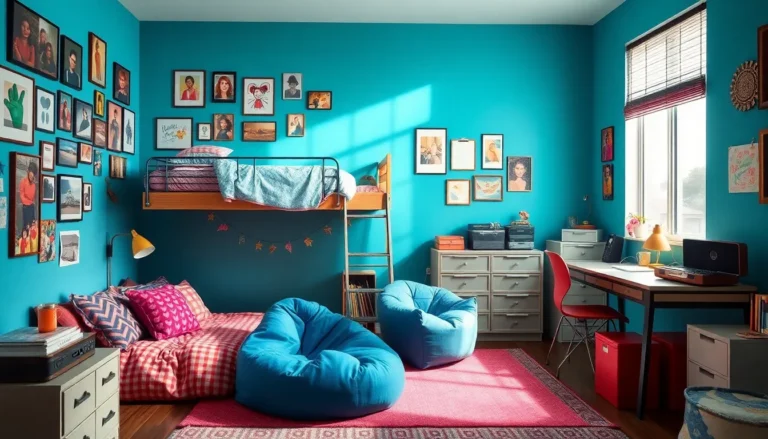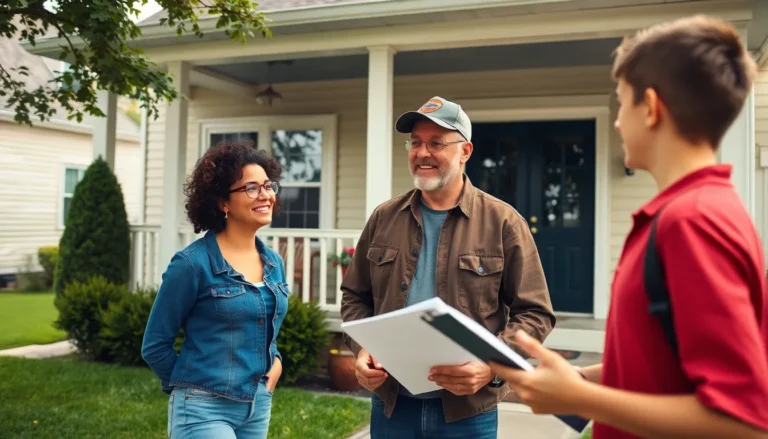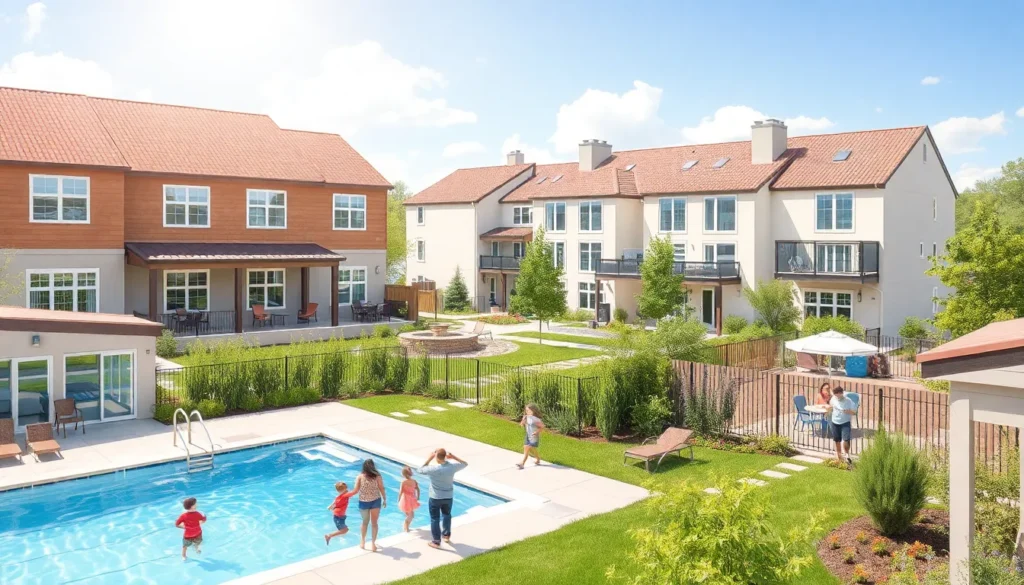Table of Contents
ToggleIn a world where finding the perfect home can feel like a treasure hunt without a map, housing developments are stepping up to the plate. They’re not just building houses; they’re crafting communities, complete with parks, schools, and the occasional coffee shop that serves the best lattes in town. Who wouldn’t want to live where the barista knows their name?
Overview of Housing Developments
Modern housing developments focus on more than just building homes. They create integrated environments that promote community interaction. Essential amenities are integral parts of these developments, including parks, schools, and coffee shops. Residents benefit from access to recreational spaces that enhance their quality of life. Communities are designed to encourage socialization and belonging among neighbors.
Sustainable design practices play a significant role in contemporary housing projects. Energy-efficient options reduce utility costs while minimizing environmental impact. Developers prioritize green spaces to promote healthy lifestyles. Walkability becomes a key feature, enabling residents to access daily needs without relying on cars.
Diverse housing options cater to various income levels and family sizes. Affordable housing units may exist alongside upscale homes in many projects. Such inclusivity creates vibrant neighborhoods that appeal to a broad range of residents. Housing developments also respond to market demands by integrating modern technology and smart home features.
Investments in infrastructure support efficient transportation. Improved road access and public transit options connect residents to urban centers. Community engagement often guides development plans, ensuring that new projects align with the needs and preferences of current residents. Overall, these housing developments not only provide homes but also nurture thriving, supportive communities.
Types of Housing Developments
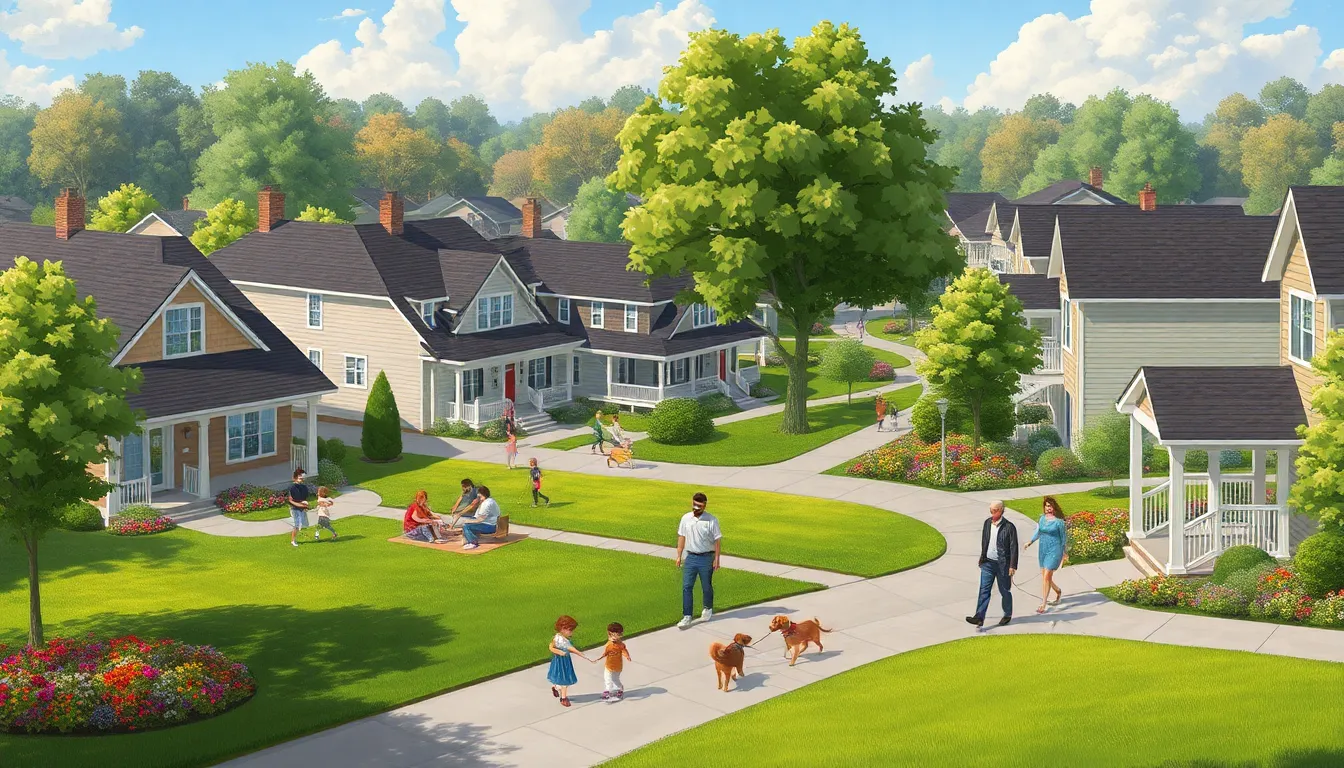
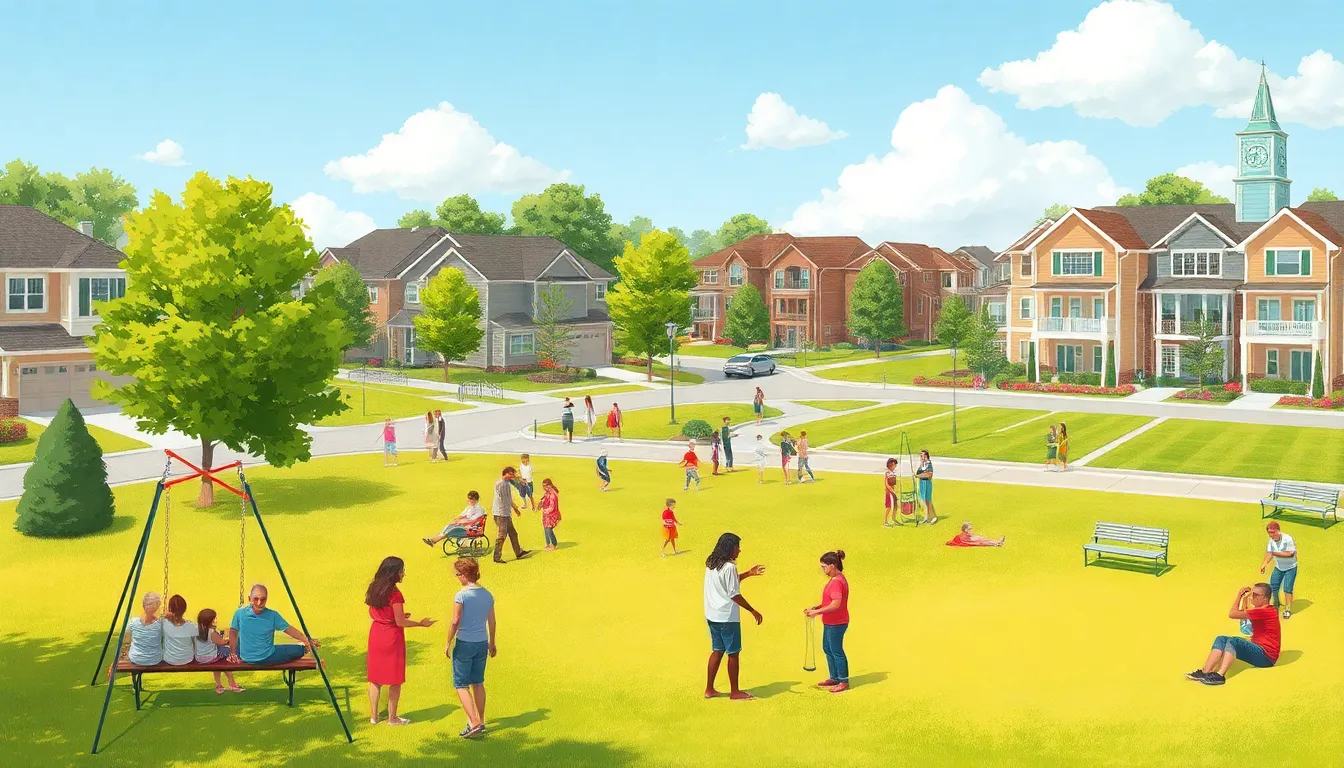
Housing developments come in various forms, each catering to different resident needs and preferences. Understanding these types helps in selecting ideal living situations.
Single-Family Homes
Single-family homes represent the most common type of housing development. These structures typically feature private yards and driveways, offering space and autonomy for families. A range of designs is available, from traditional to modern styles. Many developments include amenities such as parks or playgrounds nearby, enhancing outdoor access. Homebuyers often prefer single-family homes due to their potential for customization and expansion. This preference for single-family units contributes to the overall community feel, fostering connections among neighbors.
Multi-Family Units
Multi-family units comprise buildings housing multiple residences, such as apartments or townhouses. Typically, these developments provide shared amenities, including fitness centers or swimming pools, fostering a sense of community. Affordability remains a key advantage of multi-family units, as they often cater to various income levels. These residences usually allow for shorter commutes, as they are frequently located near urban centers. Many developments promote sustainable living by incorporating green spaces and energy-efficient systems. Consequently, multi-family units appeal to individuals seeking social interaction and convenience in their living environments.
Benefits of Housing Developments
Housing developments offer numerous advantages that extend beyond providing shelter. They contribute significantly to various aspects of community life, economics, and social interaction.
Economic Growth
Economic growth thrives through housing developments. New construction creates jobs in trades such as carpentry, plumbing, and electrical work. Developers often invest in infrastructure improvements, boosting local businesses and creating additional employment opportunities. Increased housing capacity attracts new residents, enhancing consumer spending in the community. Property values typically rise, benefiting current homeowners with greater equity. Tax revenues grow, allowing municipalities to fund essential services and infrastructure projects. Collectively, these factors strengthen the local economy, fostering a more vibrant environment for businesses and residents alike.
Community Building
Community building becomes a cornerstone of housing developments. Neighboring properties often include parks, schools, and communal spaces that foster social interactions. Residents gain opportunities to engage in local events, enhancing relationships and collaboration. Various housing styles, such as single-family homes and multi-family units, cater to diverse populations, promoting inclusivity. Shared amenities, like fitness centers and playgrounds, create spaces for families and individuals to connect. These developments ultimately cultivate a sense of belonging and promote active participation in community life, ensuring that everyone feels valued and heard.
Challenges in Housing Developments
Housing developments face numerous challenges that impact their success and sustainability. Addressing these challenges ensures the creation of livable and vibrant communities.
Environmental Impact
Developments significantly affect local ecosystems. Habitat destruction often occurs during construction, limiting wildlife and plant life. Additionally, energy consumption increases as more homes get built, leading to higher carbon footprints. Water management poses another concern; increased runoff can strain local waterways. Innovative solutions, such as green roofs and permeable surfaces, help minimize environmental impact. Incorporating renewable energy sources, like solar panels in homes, also fosters sustainable living. Planners and developers must prioritize environmentally friendly practices to create a balanced relationship between housing needs and ecological preservation.
Affordability Issues
Affordability remains a central issue in housing developments. Many new projects cater to higher income levels, leaving low and moderate-income families underserved. Rising property prices often hinder access to affordable housing options. According to the National Low Income Housing Coalition, a significant shortage exists, with only 37 affordable units available for every 100 extremely low-income renters in the U.S. Moreover, inadequate funding for affordable housing programs exacerbates the problem. Developers can explore partnerships with local governments and nonprofits to address affordability challenges. Implementing inclusionary zoning policies may also encourage a diverse range of housing options within developments, enhancing community inclusivity.
Future Trends in Housing Developments
Sustainable design practices increasingly influence housing developments. Energy-efficient materials and systems reduce environmental impact while fostering healthier living. Green spaces within communities enhance residents’ quality of life and provide recreational areas for families.
Smart technology integration becomes a common feature in new developments. Developers include smart home systems that improve energy management and increase convenience. Enhanced connectivity and security options cater to resident needs, making living experiences more enjoyable.
Walkable communities gain popularity as urban planning evolves. As such, developments prioritize pedestrian-friendly designs that encourage outdoor activities. Residents can access amenities without needing a car, promoting healthier lifestyles and reducing traffic congestion.
Diverse housing options remain essential for inclusivity in neighborhoods. From affordable housing units to upscale condominiums, varied price points cater to different income levels. This approach helps create a balanced community dynamic where various demographics can coexist.
Moreover, community engagement becomes a cornerstone of successful developments. Developers seek input from existing residents to ensure projects align with community needs. This collaborative process fosters trust and promotes a sense of ownership among residents.
Infrastructure investments enhance accessibility to urban centers. Improved transportation links connect neighborhoods to job centers and cultural hubs. Such enhancements encourage economic growth while elevating the overall living experience.
Increased focus on resilience prepares developments for climate-related challenges. Incorporating sustainable drainage systems and green roofs mitigates flooding and environmental harm. Developers adopt these strategies to safeguard communities for future generations.
Modern housing developments are transforming the way people live and interact within their communities. By prioritizing sustainable design and inclusivity, these developments create spaces that not only provide shelter but also foster connection and well-being. The emphasis on walkability and diverse housing options ensures that residents can enjoy a fulfilling lifestyle while addressing economic and environmental challenges.
As the landscape of housing continues to evolve, the integration of smart technology and community engagement will play a crucial role in shaping future projects. Ultimately, the focus on creating vibrant, resilient communities will enhance the quality of life for all residents, paving the way for a brighter future in housing development.


